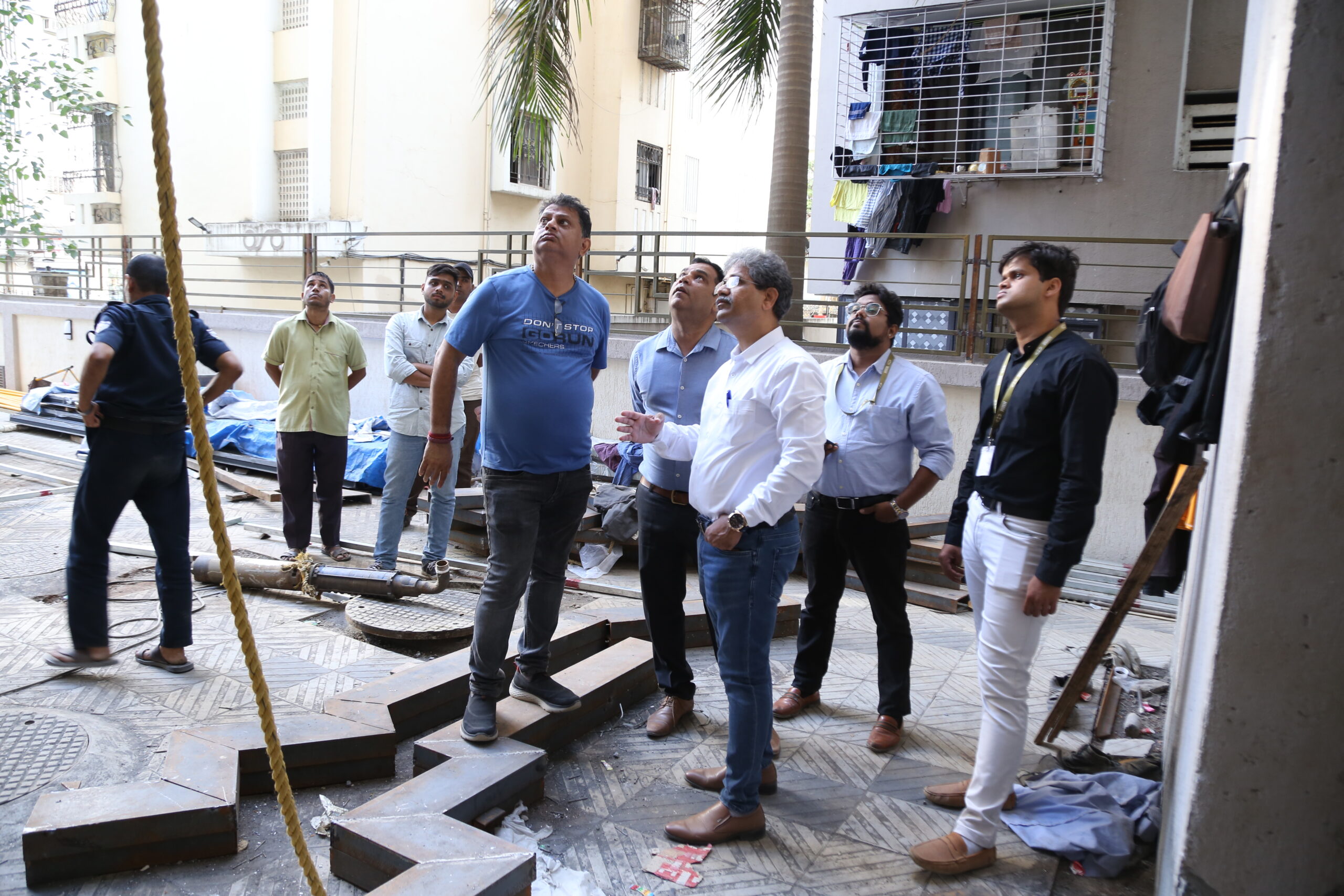
OUR PILLARS
>> Project Management
>> Planning & Designing
>> Project Approvals
>> Project Execution
Before a project is taken up precise techno-feasible study of its possibility from designing point of view, financial working and its implementation is necessarily to be done. We advice whether to take or reject the project or take decision for finalisation of its site & location.
For investment in project or Lending of a Fund for the project Architectural DD needs to be done with profound verification of approvals pending & obtained. Probable hurdles that may come needs to be foresighted with specifying the risks and its seriousness that may occur in the project.
Examination of the approvals obtained for proposal.
Determination of the probable potential of the project that may eventually obtain as per Development Regulations enforced.
Overall view of approvals / permissions that would be needed to be obtained for the project.
Foresight the probable risks / hurdles that may come in the projects with its impact on the project.
Feasibility working of the project in consideration with the market conditions.
Planning & designing is heart on any project. The plan & design should be such that it should meet the complex requirements of the project but also should maintain good aesthetics and elegance for comfortable to occupation with effective use of the space.
The planning & designing should be in accordance to the prevailing Development Regulations of the Approval Authorities and should be approval within its parameters.
Schematic designing of projects should be such that there shall be no deviation or marginal deviation in schematic plan made and the plan being implemented after approval of the plans, this increases the credibility of the planning agency.
After the approval of the project from the authorities the Working & Execution drawings of project designed & approved is vital and the same needs to be done with precision and in consultation with all consultants viz. Structural Designer, Fire Safety, Plumbing, Electrical, MVAC. The problems that would incur during execution of the project and effects after completion needs to be analyzed at planning stage itself and should be rectified beforehand itself because delay in project due to changes will lead to huge financial loss to client.
Computer models of building to be constructed should be made before releasing of working drawings with advanced software and step by step or point by point analysis & study of the structure should be done in detail to forecast the difficulty that would occur during or after completion of the project.
In planning it should be remembered that we can created heaven but the created heaven should be liked by the person who is going to occupy the planned premises. So viewing the plan or design from the point of view or requirement of the occupying person is more important than our creativity.
The Approvals of the project is simplified if the planning & designing has been done taking into consideration the enforced Development Control Regulations of the Authorities. It is necessary to collect data or remarks or clearances from all departments viz. Civil Aviation for areas in vicinity of Airports, Railways for areas falling within buffer zones, MMRDA for plots affected by Monorails or Metrorails or plots falling in MMRDA region, MBRR&B for development of cessed buildings, MHADB for development of MHADA owned lands, District Collector for State Government leased lands, Govt of India for lands owned by Central Government, Development remarks from planning authorities, Road widening remarks from planning authorities, PWD dept. for plots abutting State or National Highways, Municipal Corporation for plots owned by Corporation, Development Plan Dept or Town Planning departments for plots affected by Development Plan reservations, Storm Water Drain Planning Dept for plots abutting by Major or Minor Water course.
The obtaining of the data from all relevant departments governmental or authorities is vital before the project is taken up for planning. Planning before obtaining of this basis data can lead to changes in future after obtaining of data and will definitely reduce the creditability of planning agency. Hence pencil should not be drawn on paper until all data or remarks is properly analysed.
Approval becomes simplified if the planning is done in consideration of the development regulations enforced. Always plan the project within the said regulations and no case violation of regulations should be done.
Constant efforts and rigorous follow-up is needed to get all the approvals in time and timely approvals is key for any project.
Project execution (or implementation) is the phase in which the plan designed in the prior phases of the project life is put into action. The purpose of project execution is to deliver the project expected results (deliverable and other direct outputs). Typically, this is the longest phase of the project management lifecycle, where most resources are applied.
During the project execution the execution team utilizes all the schedules , procedures and templates that were prepared and anticipated during prior phases. Unanticipated events and situations will inevitably be encountered, and the Project Manager and Project Team will have to deal with them as they come up.
In the standard division of project management discipline this phase is called “Project Execution and Control”; the term “control” is included here because execution is not a blind implementation of what was written in advance but a watchful process where doing things goes along with understanding what is being done, and re-doing it or doing it differently when the action does not fully correspond to what was intended. This “control” is an integral part of project management and is a necessary task of the project manager. As such it is different for project evaluation as generally conceived in aid programmes, where evaluation is usually performed by a team different from the project execution team ( e.g. the programme manager, the quality support officer, etc.), so as to independently verify the quality and the efficacy of the work done.
When the whole team is close-knit control, monitoring and evaluation move hand in hand supporting and giving added value to each other. A possible way of differentiating project control by project evaluation is to say that while “control” is done by the project manager (that include monitoring of subordinates and self evaluation) evaluation is generally done directly or through a group by the line manager of the project manager and is an activity occurring in the “shared field” between project and programme management.
The key elements of project execution is the ability of working effectively in the team and the ability of remaining faithful to project scope while facing unpredicted events and difficulties.
OUR MAJOR SERVICES

>> PROJECT MANAGEMENT CONSULTANCY
>> PROJECT TECHNO-FEASIBLE STUDY AND PROJECT DUE DELIGENCE
>> OBTAINING PERMISSIONS / NOCs / APPROVALS FOR PROJECT
>> SELF DEVELOPMENT
>> CORPORATE CONSULTANCY
>> PLANNING & DESIGNING OF ALL TYPE OF PROJECTS
>> EXECUTION OF PROJECTS WITH ENGINEERING SUPERVISION
>> HMM ONLINE SERVICE PORTAL


HARSHAD MAANOHAAR MORE
Location
4th Floor, Off 17, Hive 67 Icon, Poiser Gymkhana Road, Lokmanya Tilak Nagar Poiser, Near Raghuleela Mall, Kandivali(W), Mumbai-400067
Contact us
Phone:
Tel : +91-22-46007019, +91-22-28671750 / Fax : 022 28671662
info@harshadmore.com
Working Days
Monday – Saturday
10.00 – 18.00
2nd and 4th Saturday Off.
© 2023 Harshad Maanohaar More. All right reserved.

